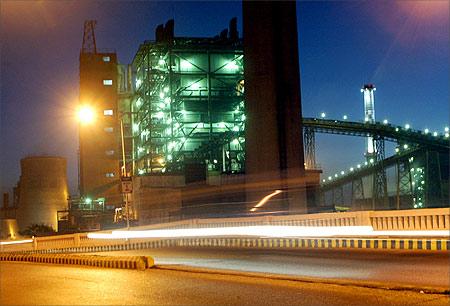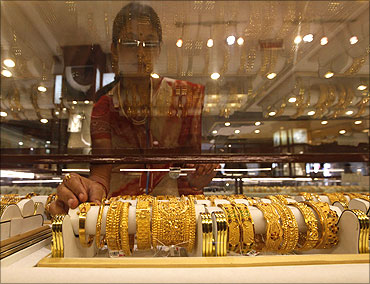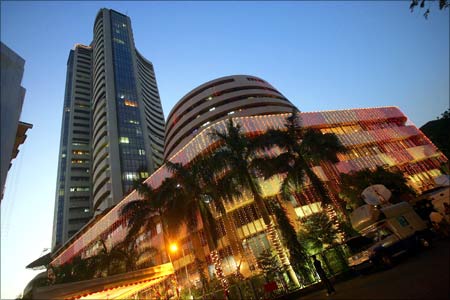Akash Prakash
India Inc will regain its appetite for investing only when better governance improves the market mood.
This has been one of the more difficult environments for investors to operate in for quite some time.
Macro risks have been all-pervasive and one just cannot get away from having a view on Europe and sovereign debt.
Even at a micro level there has been an extreme sense of sectoral dispersion, with huge disparity in performance.
Investors have to juggle various scenarios in their minds and come up with an actionable investment plan.
First of all, no matter how much one tries to avoid it, you have to have a view on the macro situation.
Whether we are going to be in a risk-on or risk-off mode has a huge bearing on asset allocation, which asset classes will do well and even which type of stocks will perform.
The majority of the huge volatility we are seeing in the markets currently is linked to the market moving between these two modes.
For India, there is a clear cyclical trade being set up, linked to stabilising inflationary expectations and the RBI coming to a halt by the end of this year.
Unless one believes that inflation is more structural in nature, and will not trend down towards seven per cent by Q1 2012, there is a strong case for the RBI to go on hold by the end of this year.
...
The investor's dilemma
Image: RBI is expected to cut rates by middle of 2012.The view that inflation is more structural and unlikely to stabilise is still a minority one, but bears watching.
Many market participants, including the bond markets, feel that the RBI will start cutting rates by the middle of 2012.
These rate cuts will be driven by greater confidence on inflation stability as well as greater fears around sustaining economic growth.
Markets normally bottom out with the last rate hike, and will have a cyclical bounce as they begin to pre-empt rate cuts.
The only way this scenario does not play out is if global commodity prices continue to move up relentlessly, which would indicate a risk-on environment, wherein India will under-perform on the way up, but still show absolute positive performance.
Thus, the odds favour a cyclical trading bounce in 2012, pretty much either way.
If commodities roll over, India will move on expectations of interest rate cuts; if commodities move higher, a risk-on environment which this typifies will cause all emerging market equities to move higher (India will clearly under-perform, however). Only in stagflation does this not work.
However, as to whether this cyclical trading bounce transitions into a more secular bull market, clearly depends on governance and confidence in India.
...
The investor's dilemma
Image: India's rate of growth is more between six and seven per cent.Unless India Inc and other decision makers regain confidence in the country and its long-term growth trajectory, this cyclical trade will eventually fade.
A couple of years back, most investors were convinced that India's trend rate of growth was between eight and nine per cent.
They felt they could underwrite this rate of growth for a decade at least.
Investors built their earnings expectations on this basis, pencilling in 15 per cent-plus earnings growth for India as the norm. Corporate India also implicitly built these growth expectations into their capex plans, with growth and volume assumptions predicated on 8.5 per cent growth.
Today there is a growing body of opinion which believes that India's trend rate of growth is more between six and seven per cent. In fact, the bears feel we are even today growing at sub-seven per cent, if you adjust for the export numbers.
While I do not yet subscribe to this view, if correct it is massively negative.
A decade of 6.5 per cent growth, as opposed to 8.5 per cent, has massive implications for earnings expectations, the fiscal, corporate capex and valuation multiples.
Companies will hold back on capex, as they recalibrate volume assumptions, and investors are not going to give India the premium valuation multiples we are used to if our growth is no higher than emerging market averages.
...
The investor's dilemma
Image: Bigger obstacle to corporate capex is policy bottlenecks.The government will have a fiscal crisis, if revenues track a 6.5 per cent growth trajectory, given the structural rigidities we have on the expenditure side.
This mood of resetting India's growth expectations lower is basically linked to a crisis in confidence around governance, policy paralysis and India Inc. not willing to invest and put money on the ground.
Unless this mood changes and investors get more comfortable with the direction the country is taking, the transition from a cyclical trading bounce to a secular bull market will not happen.
The reality remains that a bigger obstacle to corporate capex is policy bottlenecks and regulatory uncertainty, as opposed to just a high cost of capital.
The other dilemma investors face is linked to sectoral dispersion. The so-called defensive sectors are trading at very expensive valuations, with many stocks here at life-time highs.
This trade is to my mind at least very late in the day, very crowded and with hosts of investors hiding in these stocks.
Investors will have to consider moving money into more economically sensitive sectors as they position for at the minimum a tradeable bounce in 2012.
This sectoral movement of capital will be initially painful and performance-detracting, but will pay off in spades as we move into 2012.
...
The investor's dilemma
Image: Last nine months have been very tough for most investors.It will also be very tempting to overstay your welcome in these consumer stocks as growth flags.
How investors handle this transition will to a large extent determine their relative performance in 2012.
The quality premium has also gone to an extreme. Companies with a strong history of governance and performance are trading at quite elevated valuations, while any company with any doubts is trading at junk valuations.
Investors will have to find companies which meet their quality standards, yet are not fully recognised, for well-known high-quality stocks are not cheap, and one does not advocate buying junk (even though it is available at junk prices).
The last nine months have been very tough for most investors, with huge volatility, massive whipsaws and the ever-present macro tail risk.
As we move into 2012, a tradeable bounce in the Indian markets is definitely on, but whether this bounce has any legs will ultimately depend on governance.
As global events have shown, governance globally is a concern, with investors citing a lack of confidence in governments in both the EU and the US as the primary cause of the market malaise.
India is unfortunately not alone in this.







article